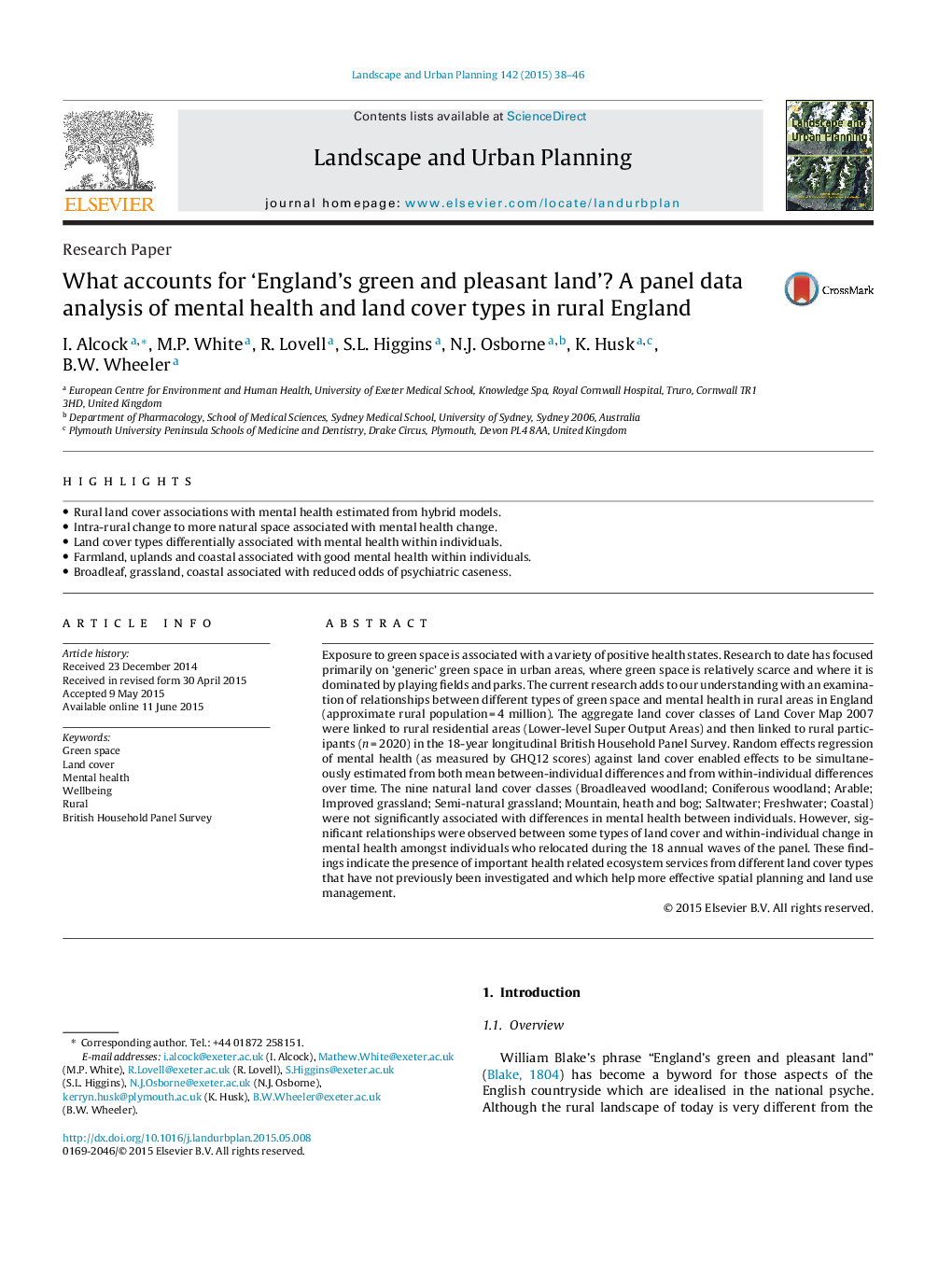| Article ID | Journal | Published Year | Pages | File Type |
|---|---|---|---|---|
| 7461006 | Landscape and Urban Planning | 2015 | 9 Pages |
Abstract
Exposure to green space is associated with a variety of positive health states. Research to date has focused primarily on 'generic' green space in urban areas, where green space is relatively scarce and where it is dominated by playing fields and parks. The current research adds to our understanding with an examination of relationships between different types of green space and mental health in rural areas in England (approximate rural population = 4 million). The aggregate land cover classes of Land Cover Map 2007 were linked to rural residential areas (Lower-level Super Output Areas) and then linked to rural participants (n = 2020) in the 18-year longitudinal British Household Panel Survey. Random effects regression of mental health (as measured by GHQ12 scores) against land cover enabled effects to be simultaneously estimated from both mean between-individual differences and from within-individual differences over time. The nine natural land cover classes (Broadleaved woodland; Coniferous woodland; Arable; Improved grassland; Semi-natural grassland; Mountain, heath and bog; Saltwater; Freshwater; Coastal) were not significantly associated with differences in mental health between individuals. However, significant relationships were observed between some types of land cover and within-individual change in mental health amongst individuals who relocated during the 18 annual waves of the panel. These findings indicate the presence of important health related ecosystem services from different land cover types that have not previously been investigated and which help more effective spatial planning and land use management.
Related Topics
Life Sciences
Agricultural and Biological Sciences
Ecology, Evolution, Behavior and Systematics
Authors
I. Alcock, M.P. White, R. Lovell, S.L. Higgins, N.J. Osborne, K. Husk, B.W. Wheeler,
